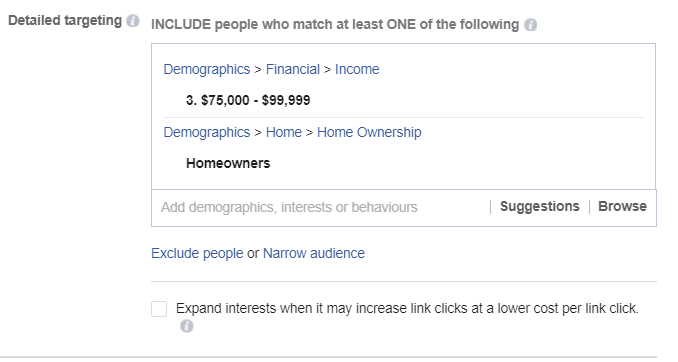The final quarter of the year is the quarter of giving.
With major holidays like Thanksgiving and Christmas just around the corner, in this article I’m going to show you how to target gift audiences and ramp up your sales.
What is a gift audience?
A gift audience is a group of people who may not be your target market, but they have a close friend or family member who fits your target demographic.
For example, if your online store sells women’s fragrances, men aren’t your customer base. However, there are men who are in a relationship with women or have women in their family who are your target demographic.
Gift audiences is all about convincing someone who isn’t your customer to buy your product for someone else who is your customer.
This may sound easy, but it requires smart targeting and the right messaging.
How to target gift audiences on Facebook
There are two characteristics that make up a good gift audience on Facebook. They are disposable income and relationship.
Disposable income – For someone to buy a gift for someone else, they need to have a disposable income.
Carrying on with the example above about a boyfriend buying his girlfriend perfume as a gift for the holidays, a 30-year-old male in a full-time job who has a car or his own home is much more likely to click your ad to buy a gift for his girlfriend than a student at college with no job who is also in a relationship.
When targeting gift audiences always think about disposable income, and target using wealth-related interests and behaviors such as income, car owner, home owner, and age.

You can also target using spending methods, which reveals data on how prospects spend their money, which cards they use, and what type of place they shop.

Finally, research unemployment levels in the U.S. and focus on states where unemployment is low, if you decide to target nationwide.
Relationship – To buy a gift for someone else, the person you’re targeting must be in some sort of relationship with someone else. On Facebook you can target people who are in relationships, married, have children, or are grandparents.

Do not use the usual interest targeting or lookalike audiences for gift audiences – this will not work. You must focus on wealth and relationship indicators.
Messaging and creatives to use
Messaging and creatives is the second most important thing after proper targeting.
In most direct response ads, you’re calling out to the prospect to make a specific action, such as clicking the ad to learn more.
Gift audiences won’t care about your product, so you’ll need to pivot the message to focus on how happy the receiver will feel, or how the giver will feel after giving the gift.
A good text creative will include the person they are buying the gift for and the holiday.
For the action shot, use an image where somebody is giving your gift to the receiver:

The copy and image above immediately shows the gift audience that the product is NOT for them, but for someone else.
Your messaging needs to create zero confusion. If they cannot tell you’re asking them to buy a gift for someone else within the first second, then your creative is not strong enough and your ad will fail.
Retargeting gift audiences
A lot of thought and consideration goes into buying someone else a gift. Your gift audience may not immediately convert with your first advert, which is why retargeting is important.
Here are a few tips to test when retargeting such audiences:
Evoke emotions – Don’t focus on the benefits or features of your product. The buyer is not using your gift, so they don’t care. They may not know much about your product to fully understand the benefits.
Instead, pivot your message and touch on how the receiver will feel when the gift giver surprises them with a well-thought-out and planned present.
This type of messaging is a win-win as the gift giver comes out as smart and thoughtful, and the receiver gets something they will value.
Use urgency – Create super short offer ads that retarget your audience with deadlines to speed up their decision processes; otherwise they may end up shopping around and fall out of your funnel.
Staggered pricing – If you sell a lot of products at different price points, then during retargeting serve the gift giver three different products that vary on price.
Select a low-value item, a medium-priced item, and a high-value item. If you run the risk of showing them a single product, they may feel it’s too cheap or too expensive to give as a gift.
Three choices are optimal; more than that and you may create confusion for the gift giver.
Your turn
Gift audiences will be smaller in size than most other cold audiences you target, but they can be extremely profitable and a great way to turn new audiences into customers.
If you find a message and product that sells extremely well, you can try and run your gift audiences 365 days of the year by targeting people who have friends’ birthdays or anniversaries coming up.